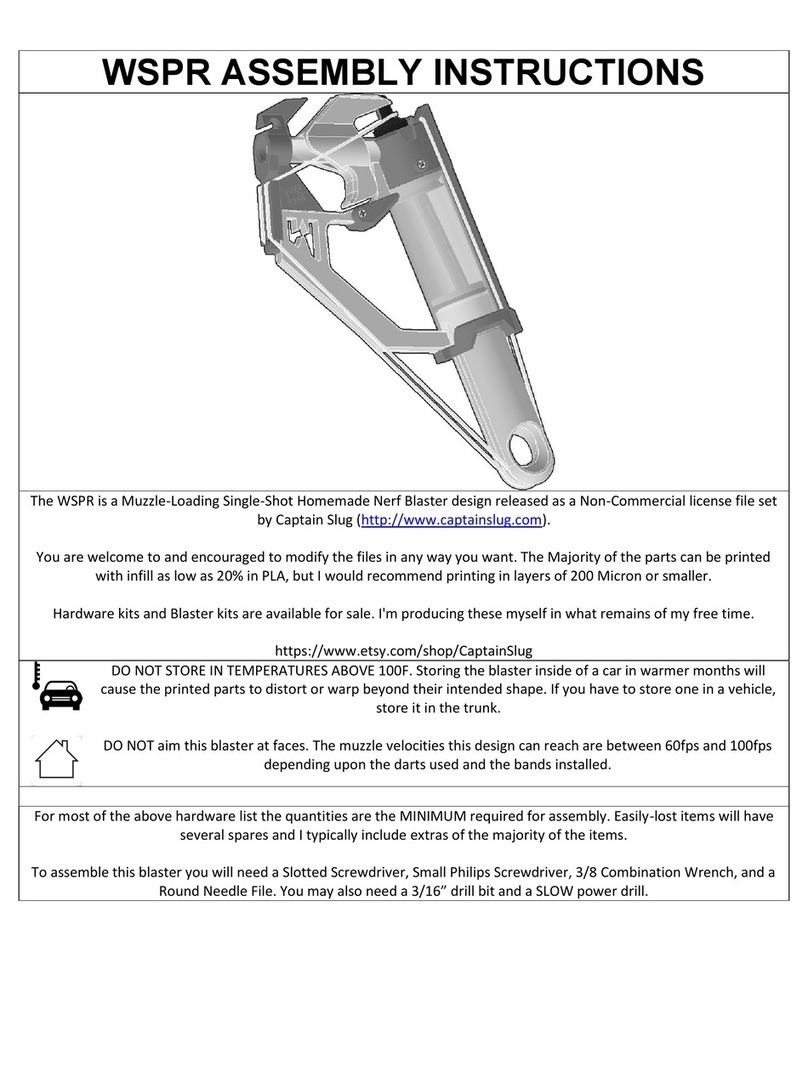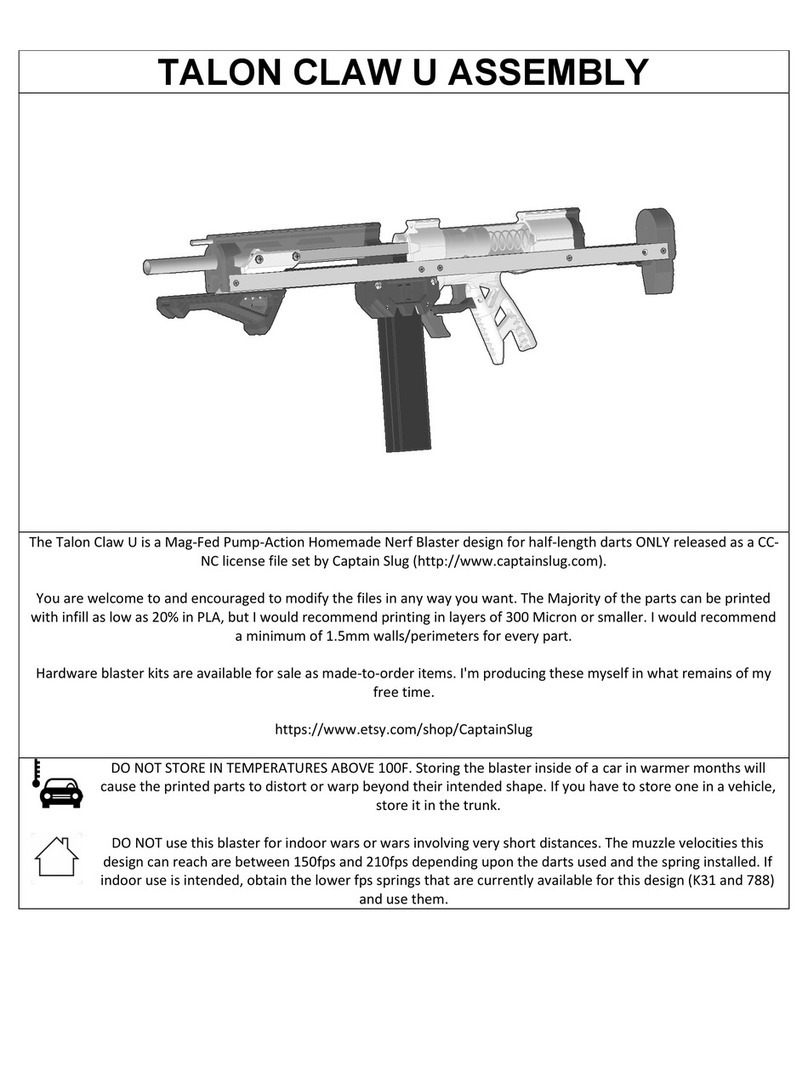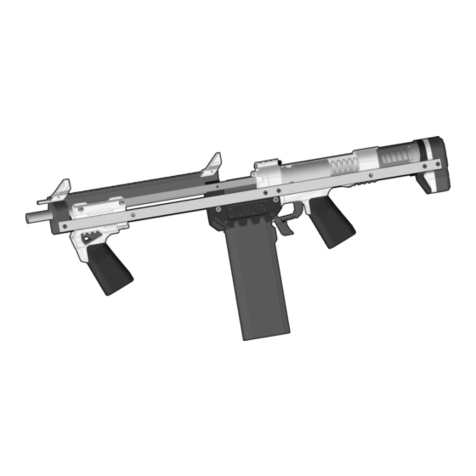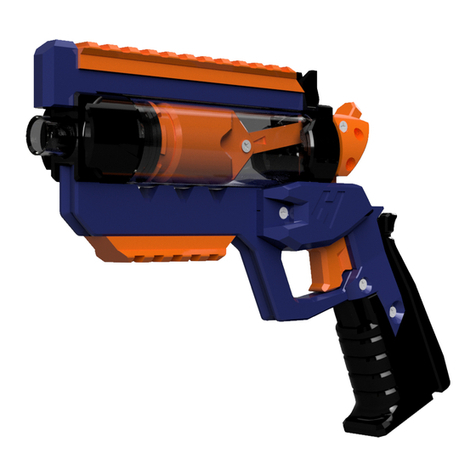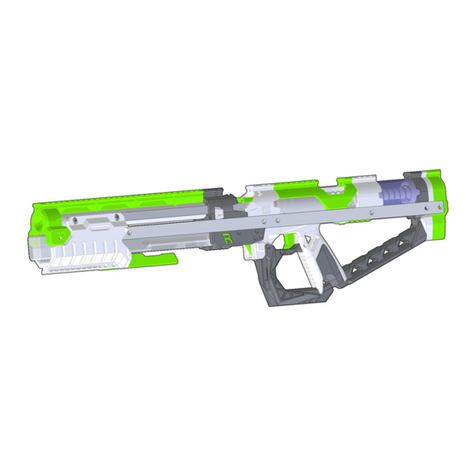
FLAK ASSEMBLY INSTRUCTIONS
plunger homemade blaster powered by elastic cords. It can be setup to
accept and fire from Rival Mags, Talon Mags, Sledgefire Shells, Spring Thunder Shells, Trilogy Shells, spigot-launched
Missiles (Demolisher Rockets), and anything you want to plug onto a 1/2 SCH40 pipe spigot. It is released as a Non-
Commercial license file set by Captain Slug (http://www.captainslug.com).
You are welcome to and encouraged to modify the files in any way you want. All of the parts can be printed with infill as
low as 20% in PLA, but I would recommend printing in layers of 200 Micron or smaller. Also set the wall/perimeters to
1.5mm to 2mm thickness.
Hardware kits and Blaster kits are available for sale. I'm producing these myself in what remains of my free time.
https://www.etsy.com/shop/CaptainSlug
DO NOT STORE IN TEMPERATURES ABOVE 100F. Storing the blaster inside of a car in warmer months will
cause the printed parts to distort or warp beyond their intended shape. If you need to store one in a vehicle
temporarily, store it in the trunk.
DO NOT aim this blaster at faces. The muzzle velocities this design can reach are between 80fps and 150fps
depending upon the darts used and the bands installed.
f the above hardware list the quantities are the MINIMUM required for assembly. Easily
several spares and I typically include extras of the majority of the items. Item #19 is not used in this build.
To assemble this blaster you will need a Small Philips Screwdriver, Flat screwdriver, Scissors, and a Round Needle File.
The Plunger Tube in the Hardware Kit does come pre-lubricated. But it's also a good idea to have extra lubricant on-hand
for the Plunger Tube and I would recommend only using a clear Silicone Grease such as Oatey's brand #30219. Any clear
90% silicone grease will work fine so long as it does not include any additives. NEVER USE SILICONE LUBRICANT FROM
AN AEROSOL CAN. The propellants used in those are harmful to plastic parts.






